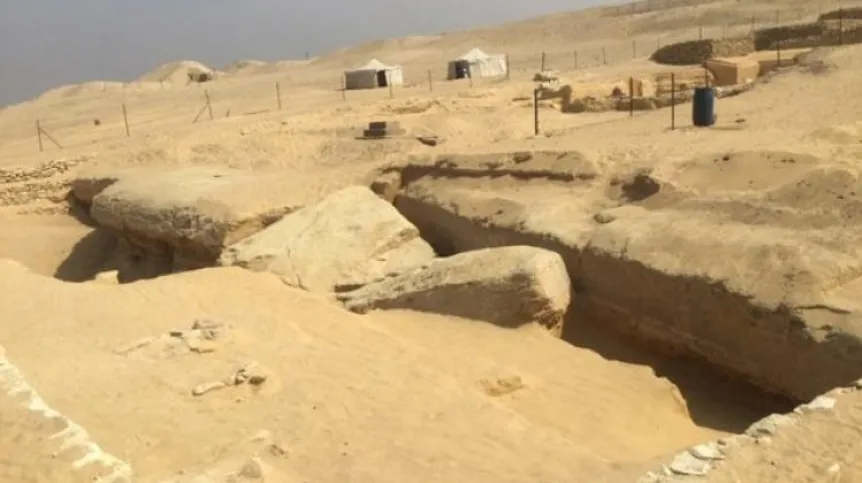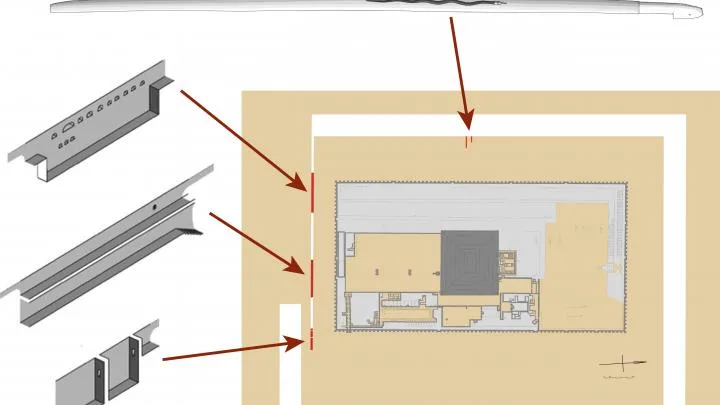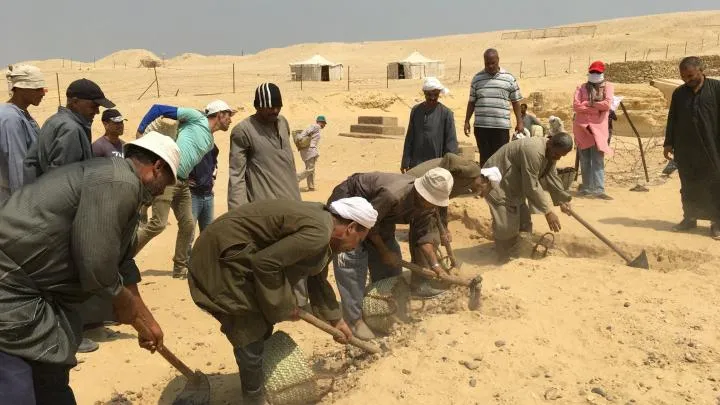
The huge, rectangular ditch carved around the oldest Egyptian pyramid - the Pyramid of Djoser - was a three-dimensional model of the deceased pharaoh`s way to the afterlife, believes Egyptologist Dr. Kamil O. Kuraszkiewicz.
Djoser (2667-2648 BC) was the first Egyptian pharaoh to be buried in a pyramid. For the first time in the history of Egypt, stone was used on such a large scale during this construction.
"However, no hieroglyphic inscriptions inside the pyramid present any concepts associated with the Egyptian afterlife and death" - says PAP. Kamil O. Kuraszkiewicz from the Department of Egyptology, Faculty of Oriental Studies, University of Warsaw.
According to his findings, some of the beliefs associated with the Egyptian afterlife could be reflected in reality. The so-called Dry Moat, a giant trench made on a rectangular plan (approx. 750 by 600 m) could be a three-dimensional model of the way of the deceased pharaoh to the afterlife. The trench surrounded the funerary complex of Djoser, that included the Step Pyramid and adjacent buildings enclosed with a huge limestone wall.
Fortunately, its fragment west of the Pyramid of Djoser was within the scope of the Polish-Egyptian archaeological mission, currently led by Kuraszkiewicz. Based on the results of nearly 20 years of excavations, the scientist has developed a new concept concerning the significance of this object.
So far, archaeologists have discovered there carved tombs of dignitaries of the 6th dynasty, several hundred years younger than the Pyramid of Djoser. Unusual, horizontal, low corridors drew their attention. According to the researchers, they could come from the time when the pyramid was erected. Their function has been a mystery.
One of the tunnels leading towards the pyramid ends after approx. 20 m with a small room. Inside, Polish archaeologists found an unusual ritual harpoon decorated with carved images of snakes.
"This weapon could be either one of the threats awaiting the king, or a weapon prepared for the ruler to be used against them" - the Egyptologist suggests. According to Egyptian beliefs, the way leading to the afterlife was difficult and dangerous. Before the deceased could enjoy eternal life, they had to overcome a series of obstacles and face dangerous creatures.
The researchers assumed that if the theory of the three-dimensional model of the way to the after-world was true, further similar corridors should be located near the previously discovered ones.
During the last excavation campaign in September 2018, in accordance with the researchers` expectations, a few meters south of the entrance to the previously discovered corridor they uncovered the outline of a rectangular hole carved in the bank, probably leading to a further structure. The entrance is blocked by huge rock fragments. "We will try to unearth it in the next campaign" - the Egyptologist says.
Kuraszkiewicz has more evidence to support his theory. He mentions the strange structures in the western part of the "Dry Moat", discovered in the beginning of the 20th century. It was not just a flat-ended ditch. There are also transverse walls with openings a dozen meters over the bottom, stairs, rows of deep niches of unknown purpose.
"The +Dry Moat+ could have been a model of the way that the dead king had to travel to achieve eternal life, a road with obstacles such as walls with high crossings, guarded by dangerous creatures. The niches could be designed for them" - he points out.
It is known that the first Pyramid Texts, inscriptions describing the pharaoh`s way to the afterlife, appeared inside the Egyptian pyramids only a few hundred years after Djoser`s rule. The contents of inscriptions are much older, the researchers have determined. They assume that the texts were written on papyri and placed in pyramids, and simply did not survive to our times - they were stolen or destroyed. Perhaps - as Kuraszkiewicz suggests - beliefs were also reflected in three-dimensional structures.
Today, the "Dry Moat" is almost entirely filled with debris and sand blown from the desert. It is completely invisible from the surface, but its outline can be seen on some aerial and satellite images.
Scholars have suggested that it was the boundary between the sphere of the sacred, that is, the royal tomb, and the profane, that is, all that was beyond it. According to others, it was a quarry, in which the material for the pyramid was mined, and did not have any other significant functions.
PAP - Science in Poland, Szymon Zdziebłowski
szz/ agt/ kap/
tr. RL















